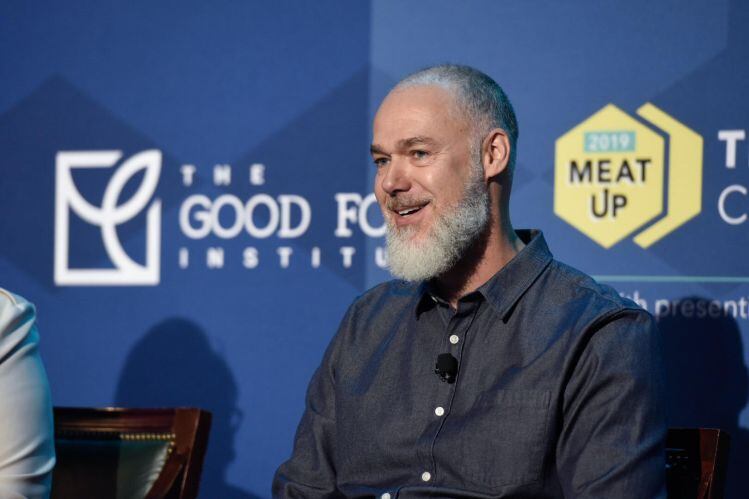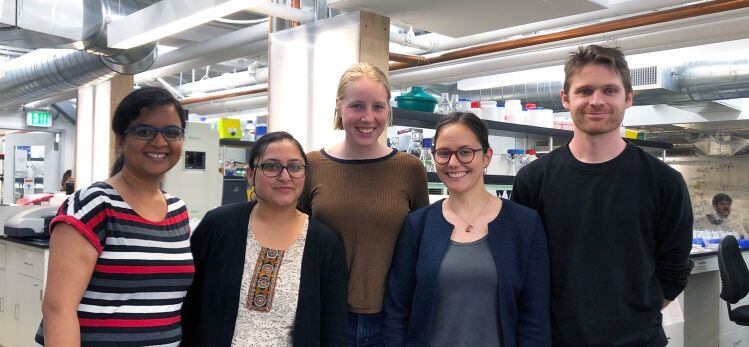Unlike some other startups using microbes to produce protein such as Perfect Day, Clara Foods and Motif Ingredients, Chicago-based Sustainable Bioproducts is not using genetic engineering (eg. synthetic biology to ‘program’ microbes to produce target molecules).
Instead, it is working with ‘extremophiles’ - fungal strains that can survive in extreme environments such as the volcanic springs at Yellowstone National Park - that naturally produce high levels of complete protein when grown in a controlled environment at around 27 degrees celsius, said CEO Thomas Jonas, who is building a 36,000 sq ft pilot plant in Chicago capable of producing meaningful quantities of product next year.
Speaking to FoodNavigator-USA at the Good Food Conference in San Francisco last week, Jonas said Sustainable Bioproducts is producing a whole food ingredient (rather than a protein isolate or concentrate) containing 50%+ protein, plus fibers, oils, and desirable micronutrients including vitamin B12 (highly desirable in a vegan protein), vitamin D, iron, and calcium.
The ingredient has a mild and bland taste and light color, all the essential amino acids and a PDCAAS score of 0.93, which is close to animal protein, making it suitable for multiple food applications including plant-based meat, said Jonas, who recently raised $33m from high-profile backers including Bill Gates and the venture arms of food giants Danone and ADM.
Why start with a B2C launch?
Like TerraVia – which launched a retail product to introduce chefs and consumers to algae as a new cooking oil, and Perfect Day, which recently launched a limited edition ice cream featuring its ‘non-animal’ milk proteins – Sustainable Bioproducts is creating a consumer brand to create a splash and help large consumer brands see there is a market for a novel protein-packed ingredient.
The company has not yet disclosed which retail products it intends to launch first, but confirmed "there will be a number of products."
“Our initial goal is to bring this to market ourselves – to go B2C with it,” said Jonas, who has recently made some high profile hires to advance this strategy, including former Kraft Foods CEO Tony Vernon (who has joined the board), Cargill exec Jim Millis (as CTO), and ex Leo Burnett exec Karuna Rawal (as chief marketing officer), who came up with the award-winning #LikeAGirl campaign for Always.
“Microbes can be a complicated story, so to start with we want to tell the story to consumers ourselves, directly” said Jonas. “But we don’t need to make every single product under the sun ourselves and we also want to partner with the right people for other products.”
“There is this growing realization that microbes are pretty damn efficient. They make great protein and they do it really fast, you don’t have to plant a seed and harvest it six months later, and you can completely control the environment.
“There is a revolution going on in protein production and in the future I don’t think people care if the ‘cells’ are from cows or microbes. No one is attached to killing cows, as Pat Brown would say [the founder of plant-based meat co Impossible Foods], they just like the meat.”
Thomas Jonas, CEO, Sustainable Bioproducts
How do you talk to consumers about eating microbes?
He added: “Our research shows that consumer acceptance of these ingredients is actually a lot higher than we expected, especially with young consumers. Candidly we’ve been flabbergasted by the level of acceptance."
Rawal added: “We’re testing a number of different terms to describe the ingredient, microbe, fungi, and so on; we’ve been incredibly surprised by how open people are to this. What we also found was that consumers just want to know what it is, they don’t like it when companies cloud things in [euphemistic] language, and we don’t want to confuse anyone.
“But I’d say we’re in a different time to when Quorn [a soil micro-organism described on pack as ‘mycoprotein’] came to market and since then, the notion of good bacteria, and fermented products have become very mainstream and the landscape has changed.”

GRAS determination
So can you call the ingredient ‘plant-based’ given that it’s from the fungal kingdom and technically not a plant or an animal?
“One of the things we talked to consumers about was this third branch of life all around us that we’re not really tapping, that there are plants and animals and then this other huge group of fungi that is actually closer to animals in many ways, and it is pretty exciting," said Jonas.
So how would the ingredient be listed on food labels? “We’re having those conversations now,” said Rawal, who said the company is currently in the final stages of putting together GRAS determinations for the ingredient, which it plans to submit to the FDA.
Microbes are exponentially more efficient than animals and many plants at producing protein
Right now, producing protein – whether from peas and soybeans, or cows and chickens – is resource-intensive and time-consuming, requiring large amounts of land, energy and water, observed Jonas. It takes years to grow animals, and months or years to grow plants, he said.
“Microbes can double [their biomass] in a matter of hours and the ‘growing season’ is 24 hours a day, seven days a week, 365 days a year.”
What makes ‘extremophiles’ alluring as a potential food source is that they have evolved to do more with less – that is, they can produce high quality protein with minimal inputs very efficiently in a highly acidic environment, which “drastically reduces” the risk of contamination and enhances food safety, claimed Jonas.
Finding more efficient sources of high quality protein is rapidly becoming a top priority for leading food companies and investors, explained Jonas, who teamed up (in 2014) with Mark Kozubal, a geomicrobiologist at Montana State University who founded Sustainable Bioproducts with a view to developing biofuels, but realized there was more commercial potential in food.




